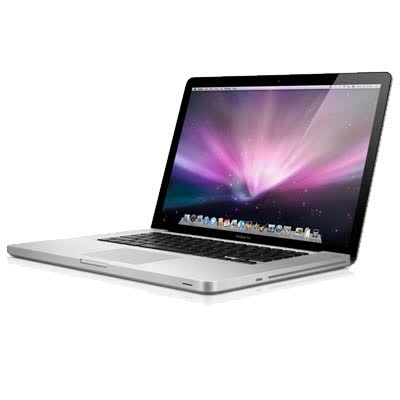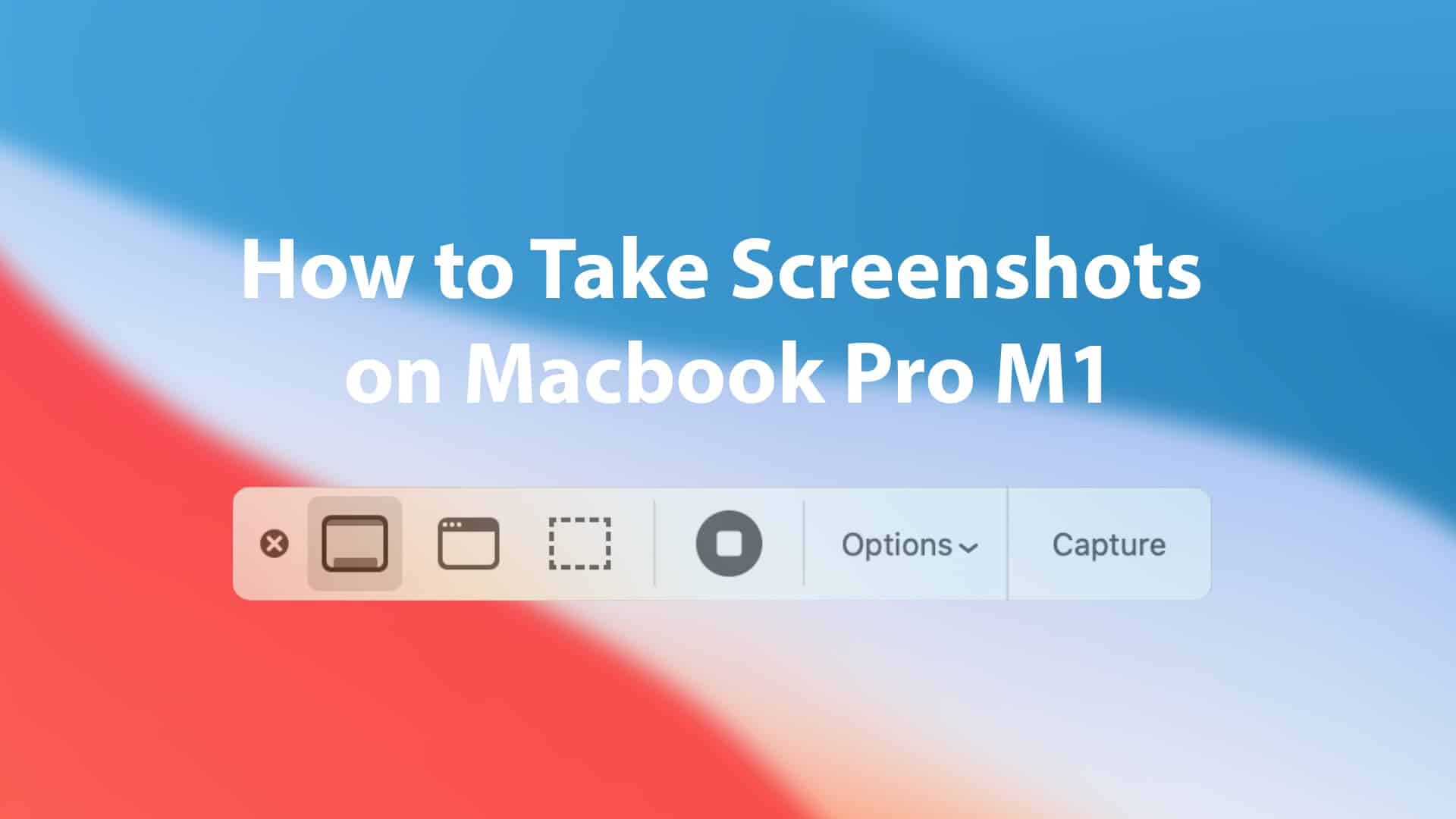Virtual Machine Disk is the “containers” for virtual hard disk drives to be used in virtual machines like VMware Workstation or VirtualBox. In simpler terms, just like the hard disk for your PC or Mac, a Virtual Disk is a disk drive for virtualization software. It is a container file that acts similar to a physical hard drive. Apple has stated that they're totally ready for Windows support on M1, but Microsoft doesn't license the Arm version of Windows, so it's currently not possible,. I just set up my new Macbook Pro 15' (2017). During the installation and configuration of my Virtualbox VM's I realised, that the 'Enable VT-x/AMD-V' option which can be found under Virtual Machine Settings - System - Acceleration is not available on my new Macbook Pro while it was on my previous one (Macbook Pro 15' 2014).
- Virtualbox For M1
- Macbook Pro M1 Virtualbox App
- Macbook Pro M1 Virtualbox
- Virtualbox On Macbook Pro
- Macbook Pro M1 Virtualbox Pro
With M1 Macs mere days away for early adopters, those who need to run virtual machines on their Macs may have a bumpy time ahead.
It is important to note that currently available versions of Parallels® Desktop for Mac cannot run virtual machines on Mac with Apple M1 chip. Good news: A new version of Parallels Desktop for Mac that can run on Mac with Apple M1 chip is already in active development.
When Apple Silicon Mac was first announced during the keynote at WWDC on June 22 of this year, Apple demoed a Parallels Desktop for Mac prototype running a Linux virtual machine flawlessly on Apple Silicon. Since WWDC, our new version of Parallels Desktop which runs on Mac with Apple M1 chip has made tremendous progress. We switched Parallels Desktop to universal binary and optimized its virtualization code; and the version that we are eager to try on these new MacBook Air, Mac mini and MacBook Pro 13″ looks very promising.
VMWare Fusion isn’t ready yet either, according to this tweet:
So excited for todays announcements from @Apple!
While we're not quite ready to announce our timeline, we're happy to say that we are committed to delivering VMware virtual machines on #AppleSilicon! pic.twitter.com/en1FNorxrM
— VMware Fusion (@VMwareFusion) November 10, 2020
Even when these and other virtualization tools are ready,1 running Windows as a VM atop a M1 Mac probably isn’t going to be. So far, all the public has seen running virtually on M1 Macs is ARM-based Linux, back at WWDC.
Microsoft has a version of Windows running on ARM chips, but as of this summer, things didn’t look great for getting it to run virtually on the new Macs:
“Microsoft only licenses Windows 10 on ARM to OEMs,” says a Microsoft spokesperson in a statement to The Verge. We asked Microsoft if it plans to change this policy to allow Windows 10 on ARM-based Macs, and the company says “we have nothing further to share at this time.”
That said, ARM Windows is getting better. Back in September, Microsoft announced that the ARM version of Windows 10 is gaining x64 emulation:
We are excited about the momentum we are seeing from app partners embracing Windows 10 on ARM, taking advantage of the power and performance benefits of Qualcomm Snapdragon processors. We heard your feedback and are making Microsoft Edge faster while using less battery, and announced that we will soon release a native Microsoft Teams client optimized for Windows 10 on ARM. We will also expand support for running x64 apps, with x64 emulation starting to roll out to the Windows Insider Program in November. Because developers asked, Visual Studio Code has also been updated and optimized for Windows 10 on ARM. For organizations, we’re committed to helping them ensure their apps work with Windows 10 and Microsoft 365 Apps on ARM64 devices with App Assure.
Before this, the ARM version of Windows could only emulate 32-bit applications. It’s a nice improvement, and maybe one day it will matter to Mac users.


- Oh, and Boot Camp is totes dead. Docker is currently busted, but should work in the future. ↩
Apple announced the first set of Macs to be powered by the company's new ARM-based M1 system-on-chip (SoC) at its 'One More Thing' event in 2020. The initial lineup of M1 machines were the M1 MacBook Air, MacBook Pro, and Mac mini . At the company's 2021 Spring Loaded event, it unveiled a completely redesigned M1 iMac ...available in seven different colors no less.
At TechRepublic, we've been evaluating the new M1 Macs since release to see how they compare to their Intel-based Mac counterparts and similar Windows PCs. But, should you buy one...for yourself or your business? And, which one should you choose?
As with any business tech purchase, the answer to these questions depends on what the machine will be used for. So, I'm going to break down each machine by the job categories I believe it's best suited for. If I was still working in SMB and enterprise IT, where I started my tech career, this is how I would deploy the M1 iMac, MacBook Air, MacBook Pro, and Mac mini. Keep in mind, I'm assuming that my company already has the infrastructure in place to support Apple hardware and that the purchase follows our hardware and software procurement policy, i.e. the endusers are either in the queue for a new machine as part of our computer upgrade cycle or we're purchasing new machines to hold for near-term new hires.
© Image: AppleVirtualbox For M1
Apple's 2020 M1 MacBook Air, MacBook Pro, and Mac mini
TechRepublic Hardware Resources:
Apple iMac (M1 2021)
The 2021 iMac has been completely redesigned around the M1 SoC. The logic board and cooling system has been significantly reduced in size allowing the M1 iMac to have 50% less volume than the previous generation iMac and be only 11.5mm thick. A single glass pane covers the entire front surface and the rear shell has a flat back and rounded corners, which gives the M1 iMac the appearance of super-sized iPad mounted on a tilting stand.
The power cord has been redesigned with a magnetic connection, 2m color-matched, woven cable and external power block similar to those used by MacBook laptops. One new feature on the power block is a Gigabit Ethernet port, which allows the power cable to also serve and the machine's Ethernet connection.
© Provided by TechRepublicThe 2021 M1 iMac comes with a 24-inch 4.5K Retina display and can be configured with a 7-Core GPU or 8-Core GPU variant of the M1 chip, 8GB of 'unified memory' (shared system/video RAM), and 256GB (only available on the 7-Core GPU M1 version) or 512GB SSD storage. The 7-Core GPU model comes with 2x Thunderbolt / USB 4 ports while the 8-Core GPU models come with 2x Thunderbolt / USB 4 ports, 2x USB 3 ports and the Gigabit Ethernet power block. All models have a 1080p FaceTime HD camera. Accessories for the M1 iMac include an updated color-matched Magic Mouse, Magic Trackpad and Magic Keyboard. Certain models of the new Magic Keyboard will support Touch ID. The 7-Core GPU model ($1,299) comes in blue, green, pink and silver. The 8-Core GPU models ($1,499 or $1,699 depending on storage size) comes in those colors plus yellow, orange and purple.
The M1 iMac is a good option for:
- Existing iMac users who need to upgrade
- Knowledge workers who want a desktop instead of a laptop/external monitor combo
Creative pros who don't need the power of Mac Pro or MacBook Pro or an extra-large monitor
Apple MacBook Air (M1 2020)
The M1 MacBook Air can be configured with a 7-Core GPU or 8-Core GPU variant of the M1 chip, 8GB or 16GB of RAM, 256GB (only available on the 7-Core M1 version), 512GB, 1TB or 2TB of SSD storage. Unlike previous generations, the 2020 Air does not have a cooling fan. The laptop has 2x Thunderbolt / USB 4 ports, 3.5mm headphone jack, and 13.3-inch display. It supports Wi-Fi with 802.11ax Wi-Fi 6, 802.11a/b/g/n/ac and Bluetooth 5.0. Pricing starts at $999 for a 7-Core GPU model with 8GB of RAM and 256GB of storage. This is the same starting price as the previous generation. A maxed-out M1 MacBook Air with 8-Core GPU, 16GB of RAM and 2TB of storage will run you $2,049.
© Provided by TechRepublic Image: Apple
The M1 MackBook Air is a good option for:
- Existing MacBook Air users who need an upgrade
- Laptop users who aren't constantly maxing their CPU or GPU (executives, sales staff, knowledge workers, non-engineering students, etc.)
- Creative pros, photographers, video producers, graphic artists, etc., who need a highly portable laptop
TechRepublic and our sibling site ZDNet will actually be testing one of the M1 MacBook Airs as a video production machine in the coming weeks. Stay tuned for our test results and full review.
Apple MacBook Pro (13-inch M1 2020)
The 13-inch M1 MacBook Pro can be configured with 8GB or 16GB of RAM, 256GB, 512GB, 1TB or 2TB of SSD storage, 2x Thunderbolt / USB 4 ports, 3.5mm headphone jack, and 13.3-inch display. Unlike the new Air, it does a cooling fan as well as Apple's Touch Bar. It supports Wi-Fi with 802.11ax Wi-Fi 6, 802.11a/b/g/n/ac and Bluetooth 5.0. Pricing starts at $1,299 for Pro with 8GB of RAM and 256GB of storage. A M1 MacBook Pro with 16GB of RAM and 2TB of storage will set you back $2,299.
© Provided by TechRepublic Image: AppleThe 13-inch M1 MackBook Pro is a good option for:
Macbook Pro M1 Virtualbox App
- Existing MacBook Pro users who need to upgrade
- Creative pros who need sustained performance from their CPU and GPU
- Developers, engineers, CAD users, etc. (or students in these fields) who normally work on a laptop
I will be testing a 13-inch M1 MacBook Pro against my current machine--a late 2016, 15-inch MacBook Pro. I'm especially interested to see how the M1's integrated GPU and 16GB combined memory compares to the older machine's discrete GPU and 4GB of graphics RAM.
Apple Mac mini (M1 2020)
The M1 Mac Mini can be configured 8GB or 16GB of RAM, 256GB, 512GB, 1TB or 2TB of SSD storage, 2x Thunderbolt / USB 4 ports, HDMI 2.0 port, Gigabit Ethernet port, 2x USB-A ports, 3.5mm headphone jack, and built-in speaker. It supports Wi-Fi with 802.11ax Wi-Fi 6, 802.11a/b/g/n/ac and Bluetooth 5.0. Pricing starts at $699 for a model with 8GB of RAM and 256GB of storage. This is $100 less than the previous generation. A fully-kitted-out Mac mini with 16GB of RAM and 2TB of storage however, is still expensive at $1,699.
© Provided by TechRepublic Image: AppleAs the lowest-priced M1 Mac, the Mac mini is a good option for:
- Existing Mac mini owners who need to upgrade
- Creative pros and desktop users who don't need the power of a Mac Pro or the integrated screen on the iMac or iMac Pro, but need sustained performance
- Developers who want to get started building apps for Apple Silicon
- IT Staff who need to test the new M1 machines
Apple M1 SoC and software compatibly...TL;DR
The above recommendations also assume you've done your homework on how Apple's move from Intel-based processors to ARM chips will affect software compatibility. But if you haven't been following the story here's the TL;DR version.
© Provided by TechRepublic Image: AppleApple has been planning the transition away from Intel silicon in Macs for some time and officially announced their plans at its Worldwide Developer Conference (WWDC) 2020. The company has been using its own chips in the iPhone, iPad and Apple Watch for years, and using Apple chips in Macs has plenty of benefits:
- By not relying on Intel, Apple can better control its component costs (better profit margins) and supply chain (Intel's delay to its 7nm process).
- Developers can more easily build an app that runs across all Apple hardware.
- Users will get a more 'seamless workflow' across iOS, iPadOS and macOS devices.
- The M1 will help Apple stand out in a crowded market. As Larry Dignan wrote in his assessment of the M1 on ZDNet, 'Apple Silicon is likely to be a differentiator. Apple can market its processors well and Apple fans are likely to buy-in.'
There is one potential hiccup that IT departments and buyers will need to understand. Software written for Intel x86_64 processors that use complex instruction set computing (CISC) can't run natively on arm64 processors that use reduced instruction set computing (RISC). For most M1 Mac buyers this shouldn't be an issue.
All of the apps that come with the latest macOS version, Big Sur (macOS 11.0), or that are made by Apple have been optimized to work with M1 chip. Safari, iWork apps like Pages, Numbers and Keynote, iMovie, Final Cut Pro, GarageBand, etc. will work just fine.
iPhone and iPad apps will also run natively on M1 Macs. Although how well iPadOS and iOS apps are able to utilize the larger screen of a Mac is TBD.
Then there are what Apple calls 'universal apps' that include both a native binary version for Apple Silicon and one for Intel chips. When you download one of these apps, it will work on either an M1 or Intel Mac. During the launch event, Apple noted that Adobe would be making universal version of its apps available, starting with Lightroom in December and Photoshop early next year.
Macbook Pro M1 Virtualbox

Big Sur can also run software written exclusively for Intel chips thanks to a new version of Rosetta. Originally introduced in 2006 when Apple was transitioning from PowerPC to Intel processors, Rosetta is a binary translator, which according to the company 'allows users to run apps that contain x86_64 instructions on Apple silicon.'
Rosetta is a stop-gap measure however. Apple want's developers to eventually convert their existing Intel apps to Apple Silicon apps. And frankly, the speed of the Apple Silicon transition will depend on how quickly software developers jump on board.
Virtualbox On Macbook Pro
Also see
Macbook Pro M1 Virtualbox Pro
Apple's M1: A closer look at the chip inside of the latest Macs (TechRepublic)
Apple's MacBook Air with M1 chip: Everything you need to know (TechRepublic)
Apple Silicon: Why developers don't need to worry about the transition from Intel-based Macs (TechRepublic)
- Apple's M1 processor means faster transition away from Intel, but Mac Mini your best bet (ZDNet)
Sony PS5: It's not too late, here's where to buy the next-gen gaming console (TechRepublic)
